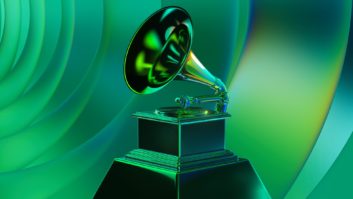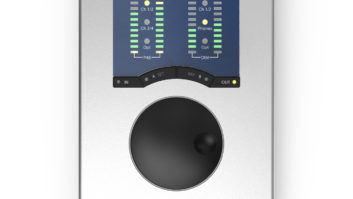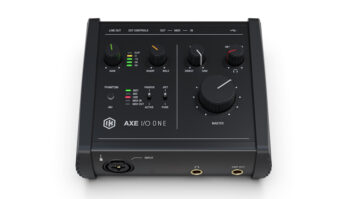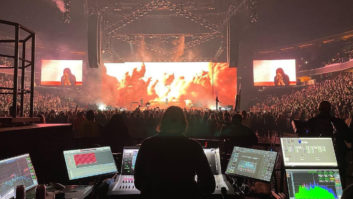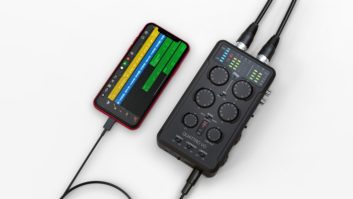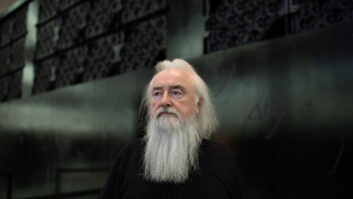It is a very still Thursday afternoon in Highland Park, one of the rapidly gentrifying historic neighborhoods in northeast Los Angeles. A red Tesla pulls up to a particularly cute house and Finneas O’Connell steps out. He has come straight from the airport where he flew in from Cupertino, Calif. The night before, the 22-year-old O’Connell performed with his 17-year-old sister, Billie Eilish, at the inaugural Apple Music Awards, where Eilish was honored as Artist of the Year.
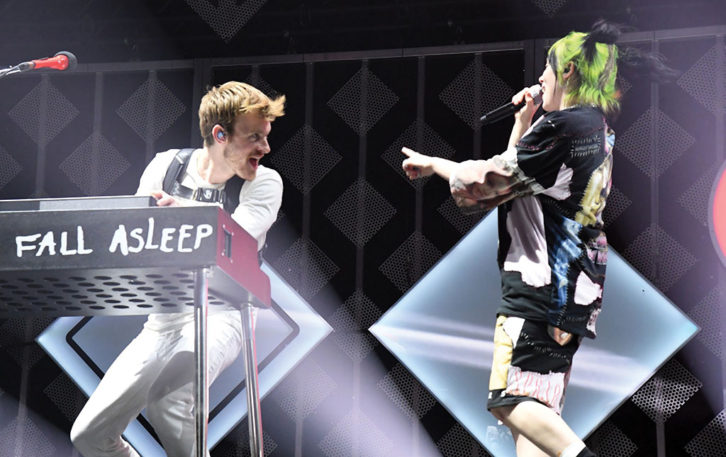
Photo by Jeff Kravitz/FilmMagic for iHeartMedia
The next day O’Connell will be at Los Angeles Top 40 radio station, KIIS FM’s Jingle Ball, once again accompanying Eilish as she takes the stage alongside Katy Perry, BTS, Sam Smith, Camila Cabello, Halsey and Lizzo. The following morning the two will be at Variety’s Hitmakers Brunch with Eilish being recognized as “Hitmaker of the Year” and O’Connell as her producer and co-songwriter. Earlier in the year, the two were given ASCAP’s prestigious Vanguard Award. To date, O’Connell has occupied the top spot on Billboard’s newly minted “Hot 100 Songwriters & Producers Chart” for nine consecutive weeks.
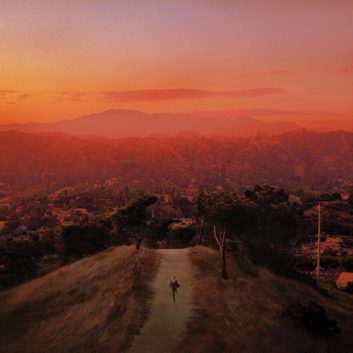
Top of the charts is O’Connell’s comfort zone. When We All Fall Asleep, Where Do We Go?, the debut album he produced for Eilish, stays firm in the Top 10 of the Billboard 200, having peaked at the number one position a few times. The single “Bad Guy” snagged the number one spot on Billboard’s Hot 100. Of the six American Music Awards Eilish was nominated for, she walked away with two of them. O’Connell has been nominated for five Grammy Awards, including Producer of the Year, Best Engineered Album, Record of the Year, Album of the Year and Song of the Year.
It’s understandable that the supremely confident O’Connell seems a little worn out. This doesn’t dampen his inherently gracious demeanor or his well-bred manners and his keen and courteous awareness of anyone and anything surrounding him. He has moved out of this house—the first one he bought when he moved away from his parents, who live around the corner—but not too far. Billie’s house is just five minutes away.
The closeness of the Baird-O’Connell family is well-known. Growing up in a two-bedroom home, where their parents slept on a futon in the living room, O’Connell and Eilish were home-schooled. They were afforded all manner of creative experiences, including participating in their mother’s, Maggie Baird, songwriting class and attending workshops at the Grammy Museum. Musically, they were exposed to everything from the Beatles to Avril Lavigne and Britney Spears, with no formal music training beyond YouTube. Temporarily following in his actor parents’ footsteps, O’Connell had a few acting gigs, most notably as “Alistair” on the final season of Glee.
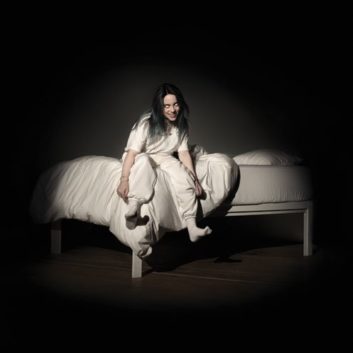
It is music that has always been O’Connell’s focus, and the acting money came in handy when he needed additional gear or software to flesh out his sounds. When We All Fall Asleep, Where Do We Go? was wholly produced in his bedroom at his parents’ house with the most rudimentary of tools crammed into the small space.
This included an iMac, first a 2011 then a 2016. Yamaha HS5 speakers and a Yamaha HS8S subwoofer. A couple of cheap Fender acoustic guitars. And one medium-expensive Thinline Telecaster, chosen for its light weight and pleasing tone. Plus, a Neumann TLM 103 microphone and his grandfather’s upright piano.
Says the articulate O’Connell: “The room was so cramped and the piano was so cloudy that I very rarely live-tracked it. I mainly used it for writing. I got a first-generation Nord from a secondhand store, then Native Instruments Kontrol, which was really big for that room. I would keep it halfway in a drawer and pull it out.”
O’Connell ventured into production by Googling “how to record music on a computer” and realizing that he needed an audio interface, then googling that. Focusrite for recording on an iPad is where he started, with one input, meaning no stereo. He upgraded to a Roland Quad-Capture, choosing it based on its gain capabilities. He moved up to the Universal Audio Apollo Twin then Apollo 8, and now the Apollo X.
FOUND SOUNDS
O’Connell’s ethos is, in part, based around experimentation with the intention of creating new sounds, usually generated from unexpected sources. The idea is to inject some interesting and one-of-a-kind flavors into his productions. This is apparent in his unique and wholly original style on Eilish’s unfettered and borderline lo-fi album, and more subtly on O’Connell’s own, more classic singer/songwriter material, most recently heard on his Blood Harmony EP.
“In modern music, if you’re not trying new things, I feel like it’s wasting a good song and you’re not helping the genre evolve,” he says. “All the sauce in my whole world is building my own sound libraries. Carrying a Tascam DR-05 recorder around, recording samples, loading the samples into Native Instruments Battery in Logic, and playing them on an Akai MPK Mini mkII keyboard.”
Case in point, O’Connell and Eilish were at a crosswalk in Sydney, Australia, when she pointed out that the Accessible Pedestrian Signal had a cool sound. She recorded it, O’Connell quantized it to the right tempo, and it became the hi-hat sound on the chorus of “Bad Guy.” On “Bury a Friend,” a stapler is heard, but also, the screeches on that song are created from Eilish’s voice modulated in Soundtoys Little AltarBoy, reverbed and then distorted into a beat. There is snow crunching on “come out and play.”
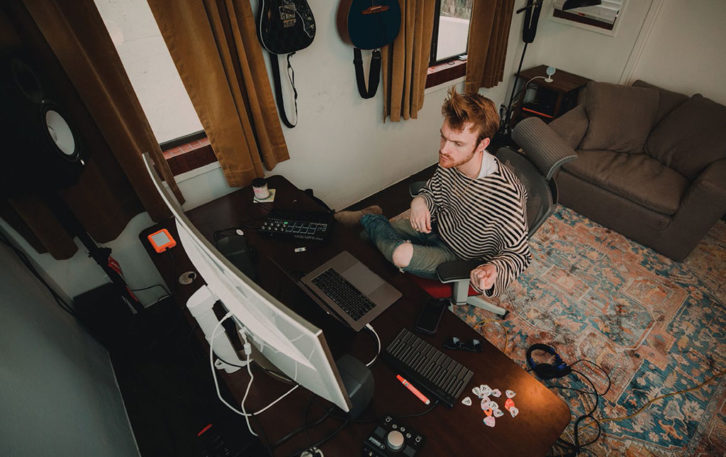
Photo: Matty Vogel
O’Connell incorporates these unconventional sound sources into his own artist material, as well. There is a car crash and a helicopter—one of the signature sounds of Highland Park when O’Connell was growing up—on “Die Alone.” A sonar sound similar to a beachcombing metal detector is on “I Lost A Friend,” and a snippet of laughter from a stranger in a park in Prague on “I Don’t Miss You At All.”
“I take everything very literally, and ‘&burn’ is about setting a car on fire,” says O’Connell of the matches being lit and blown out on Eilish’s song. “I was thinking, ‘Let me see what setting a match on fire would sound like,’ and I made a beat out of it. In its inception it was pretty simple and straightforward, but in its execution, it became exciting and unique. It was really interesting figuring out what the right amount of compression for a match is. What’s cool about that sound is I cut the envelope off really sharply so it would ‘boom-kish.’ I’m not letting the tails fade out.
“What I do is almost noise-gating but I’m really just chopping,” he continues. “If a note has a super-long tail, I wouldn’t let it have that tail. It’s like drums in the ’80s where it goes ‘goosh,’ then dies. I come up with the rhythm of every song by playing with my hands: either drawing in a drum pattern or using some kind of MIDI keyboard. Mainly, I’m just trying to have drums that sound interesting. The biggest deal to me is how good the drums are.”
Another example of taking the song meaning literally is on O’Connell’s “Break My Heart Again,” which is based around text exchanges with an ex-girlfriend. “I plugged my phone in an aux cord and typed out all the lyrics as they were playing over the song,” he says. “Now it’s a song that has this unique element where you can hear the touchscreen keystrokes on the phone. I obsess over little things like that because it means you did something that somebody else hasn’t done.”
PLUG-IN EXPERIMENTATION
Plug-ins play a large role in O’Connell’s production process, which is to be expected. He is partial to a few: Spectrasonics Omnisphere, Trilian, Keyscape, AIR Music Hybrid 3 and Loom, Output Substance for bass, and Analog Strings make their way onto every song. On vocals: Valhalla Room, Plate and Silver for its endless wash reverb style, and for delay, plus Logic’s Stereo Delay using a lot of Sample Delay by splitting the channel and creating latency in one of the pathways so it sounds like it’s in both ears.
His current favorites are Universal Audio’s Antares Auto-Tune Realtime. Its no-latency is a creative writing tool for unusual synth parts; and RC-20 Retro Color for granulation and emulation of vinyl crackle for its processing style.
“I don’t like using any committal plug-ins,” O’Connell says. “It’s always inserted after the fact. My goal is to always be using a plug-in that’s interesting right away, then I can really tweak it. If I want an envelope to be shorter, I don’t want to be looking at 75 envelopes. If there is a master envelope, I’m going to change that.”
Ease of use, both inside the box and outside, dictates O’Connell’s approach. In the studio he is sitting in now at the Highland Park house, which, he admits, “There’s nothing to see,” a mic stand is behind one of the speakers. O’Connell forgoes using that one, not wanting to invest the minute it would take to roll it over to a more accessible position. Instead, he chooses to use a handheld TLM 103 on a bar with a pop screen attached that is sitting on the ground by his feet. This he can snatch up in under one second.
“My whole life is about ergonomics, so the stuff that gets used all the time is the stuff that is right there,” he says picking up the TLM 103. “This is how Billie and I have been recording for the last couple of months, which I love. When you sing loud, you automatically pull your head away from the mic. I find that when you’re standing at a microphone, you have a tendency to not move your body very much. You’ll sing really loud right into it. With the microphone in my hand, if I’m singing really delicate stuff, I’ll be right up close and I’ll pull back to sing a big note.
“Ross Golan, who is one of my favorite producers, said in an interview that he always tells artists that you should interact with the microphone in the way you interact with a human ear,” he adds. “If you’re whispering, you’d be right up to the ear, and if you’re yelling you’d be right out. I never thought of a microphone that way. Such a no-brainer.”
THE NEW ‘BEDROOM’ STUDIO
This particular studio has not gotten as much use as O’Connell’s bedroom studio. His vocals for Blood Harmony EP and Eilish’s for her single, “Everything I Wanted” were recorded here. But unlike the unintentional acoustic treatment of the childhood bedroom studio, which, because of its size and because it was stuffed with O’Connell’s belongings, automatically absorbed sound, the Highland Park studio room has resonance.
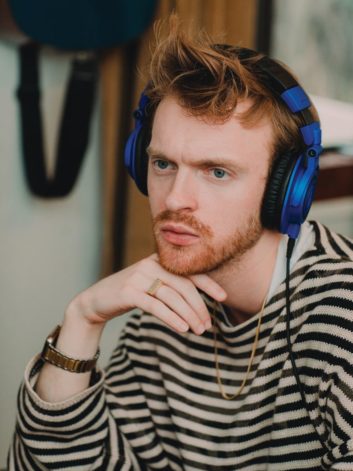
Photo: Matty Vogel
O’Connell works around this by mixing while wearing Audio-Technica ATH-M50X headphones. His stance is not to necessarily have the best headphone or the best speakers, but to know how a favorite song sounds on them and then using that as a built-in neural reference point. Having said that, O’Connell is having the studio room in his current Los Feliz home professionally built and acoustically treated.
Even so, O’Connell predicts the majority of Eilish’s second album will be written on the road. The two are embarking on a worldwide arena tour that will take place over the course of many months. He is not willing to spend that much time not having written or produced anything. “The whole architecture of my life as a producer has been writing and recording in my bedroom, friends’ bedrooms, and garages, hotel rooms and tour buses,” O’Connell points out. “Being able to make music on the road has made me much more comfortable with touring.
“I wrote and recorded almost all of the Blood Harmony EP on the road [when he was opening up for Eilish, as well as performing with her],” he continues. “Because Billie and I will be together every day, if we don’t end up creating on the road, we’ll drive ourselves crazy. I won’t force her, but I will be cooking up ideas and making stuff, and if she likes what she hears, she can wander in. It will be a way to make both our lives better.”
This organic approach is how Eilish’s foray into music as a profession began, with O’Connell calling her into sing a song (“she loved singing, she was always singing, she could stand there and sing for an hour”) he had written that wasn’t in his register. Hearing her natural blues vocal form (“she sounds like Bill Withers”), he began writing songs for her.
They started derivative, copying music they liked, and evolved into the singular sonic space they occupy now. O’Connell remembers facetiously saying to Billie and their mother, “Let’s make you a superstar. Let’s make you the biggest artist in the world.” Streams and views in the billions aside, when hearing the audience at an Eilish show (or an O’Connell solo show for that matter) singing the songs far louder than the artist, it is undoubtable that music is at a momentous point because of these two.
“It’s pretty crazy that it ended up happening,” says O’Connell of his half-jokey proclamation. “A lot of the joy in my relationship with my sister is, even though I’m writing and recording and everything, I feel like I’m observing, so it doesn’t feel like bragging when I’m bragging about her. It feels ego-less.”
At a time when it is customary to have 25 producers and songwriters create a formulaic song with “la-la-la” as its chorus, When We All Fall Asleep, Where Do We Go? is only O’Connell and Eilish. O’Connell’s artist material is only created by him. When Eilish was first signed, the two were put in sessions with teams of songwriters and producers and nothing came of it. O’Connell generates the sounds; this means that many people are knocking on his door wanting his input and his stamp on their music.
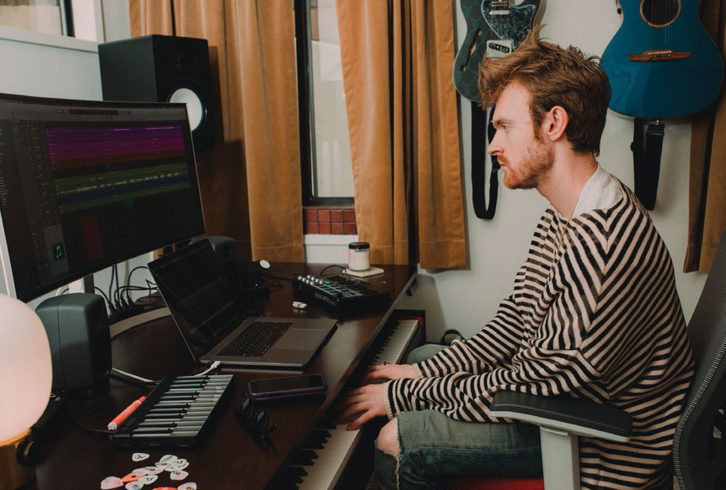
Photo: Matty Vogel
Ideally, O’Connell would prefer to produce an entire album for an artist. After When We All Fall Asleep…, he produced a powerful set of songs for Ashe and looks for artists who are willing to “park, to have a day where you don’t do anything because nobody had a good idea and then come back again and have another day with a great idea.” As it stands now, he won’t join in a songwriting session if the artist isn’t present.
“I don’t get attached to an artist unless I feel like they have a signature that is meaningful, because I can help them with that,” says O’Connell, who has had positive experiences doing additional production on Selena Gomez’s “Lose You to Love Me” and co-writing and producing Camila Cabello’s “Used to This.” He has also collaborated with Khalid, John Mayer, John Legend, Kehlani, Rosaliá, Sabrina Claudio, Jessie Reyes, Lauren Jauregui, Benny Blanco, Lennon Stella and Bruno Major, among others. But he’s not looking to be a producer-for-hire.
“I’m helping an artist tell their story,” he says. “I let them inform how the song is going to sound production-wise. If an artist just sounds like everybody else, they want me to help them sound like Billie, and I’m not interested.”
Even with Eilish, O’Connell is not looking to create the sequel to When We All Fall Asleep, Where Do We Go? At the same time, he’s not looking to dispose of everything that appealed to their audience either. What he does want to do is give people a reason to listen to the new music. In that way, the second album faces similar challenges of staying clear of sounding like anything else on the charts.
“Writing a song is a like building a house,” O’Connell concludes. “I want to live in a house that looks really cool and is stylish and that Architectural Digest would love. But I also want the closet to be functional and the dining room to be nice and the living room to be cozy. Songs are like that, too. I want to have a song that is super kick-ass and different and blows people away. But I also want them to sing along to the chorus and for them to think the melody is beautiful and that the lyric is interesting. As a producer, it’s your job to reinvent the wheel and come up with ways to make it better and different than ever before.”

